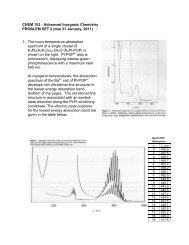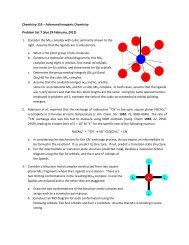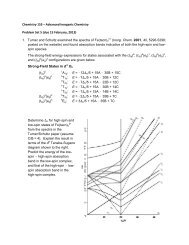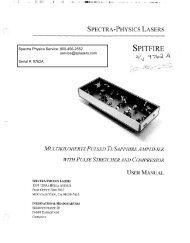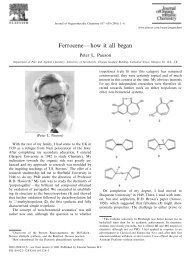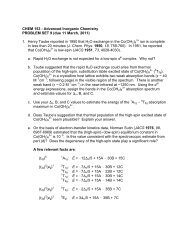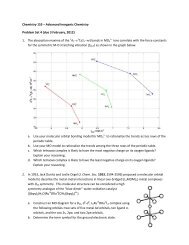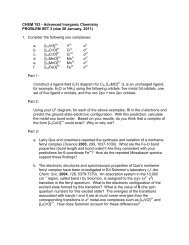Tsunami - Beckman Institute Laser Resource Center
Tsunami - Beckman Institute Laser Resource Center
Tsunami - Beckman Institute Laser Resource Center
You also want an ePaper? Increase the reach of your titles
YUMPU automatically turns print PDFs into web optimized ePapers that Google loves.
<strong>Tsunami</strong><br />
GVD Compensation<br />
The materials in the <strong>Tsunami</strong> contribute positive GVD and, in combination<br />
with SPM in the Ti:sapphire rod, induce a positive chup on the pulse.<br />
Consequently, the circulating pulse continues to broaden as it propagates<br />
through the cavity unless negative GVD is present to balance these effects.<br />
As discussed earlier, a material exhibits GVD when the second derivative<br />
of its refraction index, with respect to wavelength (d2n/d;12), is non-zero.<br />
This is a special case that is only valid when all wavelengths follow the<br />
same path through a material. This can be extended to any optical system<br />
having a wavelength dependent path length (P). GVD is then governed by<br />
the second derivative of the optical path with respect to wavelength<br />
(d2P/d;l2).<br />
For this reason, a prism pair can be used to produce negative GVD. This is<br />
generally the preferred intracavity compensation technique for ultrashort<br />
pulse lasers because (a) losses can be minimized by using the prisms at<br />
Brewster's angle, and (b) the negative GVD is nearly linear over a large<br />
bandwidth. Ideally, for stable short-pulse formation, the round trip time in<br />
the cavity must be frequency independent, i.e., Tg(o) = d@/dw = constant,<br />
where Tg(w) is the group delay time, $ is the phase change, and cc, is the<br />
frequency. In reality, dispersion is not purely linear, and higher order<br />
dispersion terms become significant for shorter output pulse widths (larger<br />
bandwidths).<br />
In the fs <strong>Tsunami</strong> laser, a four-prism sequence configuration is used to<br />
provide negative GVD (Figure A-6).<br />
-<br />
Positive<br />
Chirp<br />
Chirp<br />
Free<br />
B A R<br />
A<br />
1<br />
Tuning<br />
Slit<br />
Figure A-6: The four prism sequence used for dispersion compensation<br />
in the <strong>Tsunami</strong> laser. An input pulse with a positive chirp (red<br />
frequencies at the leading edge of the pulse) experiences negative GVD<br />
(red frequencies have longer group delay time) in the prism sequence.<br />
The net effect is that the prism sequence compensates for the positive --<br />
GVD and produces a pulse which has no chirp.



